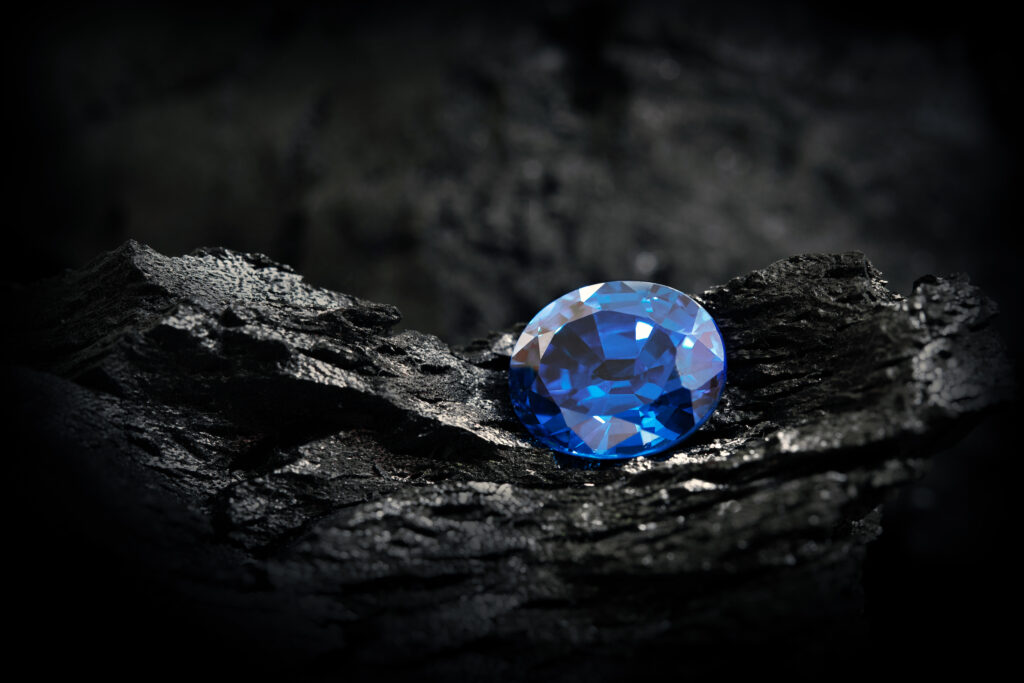Sapphires are admired most often for their beautiful, deep blue hues, but how do they actually get that coloring?
Blue, the most popular color for any sapphire, is caused by the introduction of traces of titanium and iron to the corundum mineral that makes up a sapphire, while it is forming. Sapphires can form with a range of colors – except red, which is thereafter known as a ruby.

Read on to learn more about sapphires, how they form, and what process is required to change the color of a sapphire.
Nature, That Beautiful Beast
It doesn’t matter if you’re examining a beautiful, green emerald, a remarkable, red ruby, or a stylish, blue sapphire, almost every gemstone gets its color through the same process. When gemstones form within the Earth, other elements are introduced to them that amend the color.
For example, when a sapphire is forming and titanium and iron are introduced into the mix, the stone will take on a gorgeous, blue hue. At its core, a sapphire is composed of corundum, the same mineral that also makes up a ruby, which is essentially a red sapphire.
However, the coloration process relies on little more than a few hundredths of a percent of these ‘introduced’ minerals, which explains the rarity of perfectly-hued sapphires. If a piece of corundum contains something like 0.01% of titanium, it won’t show any coloration.
But, if that same piece of corundum contained 0.01% of iron instead, it would display a slight yellow coloration. Now, if that same chunk of corundum contains 0.01% of both iron and titanium, it will take on a deep blue color.
It’s a magnificent natural process called charge transfer which, put simply, determines the transfer of an electron from one transition-metal ion to another. Admittedly, it’s an extremely complex procedure to understand, but it determines the coloration of any gemstone.
Ultimately, a sapphire can occur in a wide range of hues, from blue to pink, and from yellow to orange. In fact, you can even find black sapphires, but they’re nowhere near as popular as the ‘cornflower blue’ variant that you often see used in fine jewelry.
Another example of a mineral being introduced to change the color of a piece of corundum is in the pink sapphire. In this instance, chromium was introduced to the mineral as it developed deep within the Earth’s crust.
Although, many jewelry manufacturers will ‘color treat’ their colored stones to produce a more remarkable hue. However, many industry experts warn against such practices, as with time, the boost in coloration will diminish.
The Remarkable, Blue History
There’s a diverse history where sapphires are concerned, with the first stones being uncovered thousands of years ago. Once upon a time, the Ancient Persians believed that the Earth was balanced on a pedestal made of sapphires, which gave the sky it’s brilliant blue color.
Although you can find sapphires in many countries around the world, the bulk of the gem-quality stones that exist today are taken from Sri Lanka. However, one of the most iconic sapphires in history comes from another country entirely, and it’s known as the Star of India.
This stone is widely considered the largest gem-quality sapphire ever found, and it’s remarkably old, with estimates suggesting it’s around two billion years old. It has an intensely unique star marking across the breadth of its face, and it weighs some 563-carats.
Bizarrely, the Star of India was stolen in 1964 in a record-breaking heist, along with twenty-one of the world’s finest jewels. They were taken from the American Museum of Natural History in New York City, where the Star of India still sits today.
Most of the stones were recovered, including the Star of India, of course.
However, the Star of India is far from being the only dramatically expensive sapphire found throughout history. In 2014, a one-of-a-kind sapphire named the Blue Belle of Asia was sold at auction for an incredible seventeen million dollars.
It was a gargantuan sapphire, weighing almost four hundred carats, and sat proudly on a plush diamond and white gold necklace. It was the highest price ever paid at an auction for a single sapphire.
While it might seem so simple a thing, the coloration process that makes a sapphire a sapphire is rarely a perfect procedure. If it goes right, however, the most beautiful bluish hues are produced, and the sapphire will instantly be a sought-after commodity.
